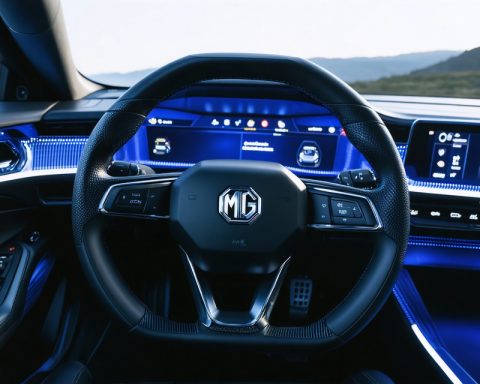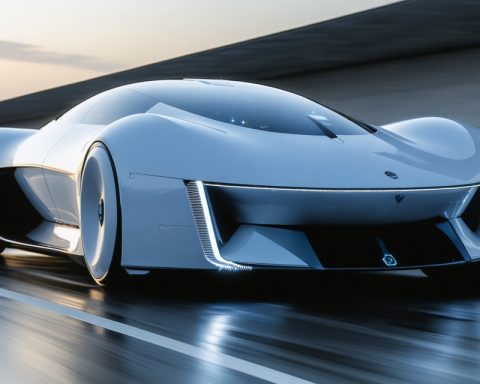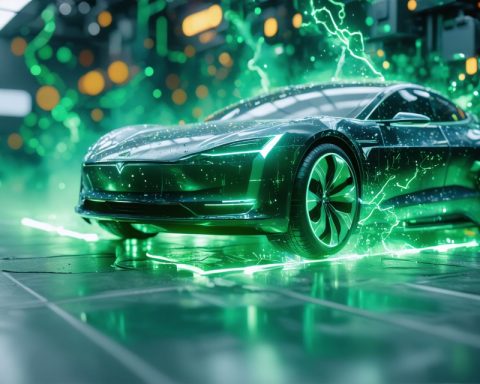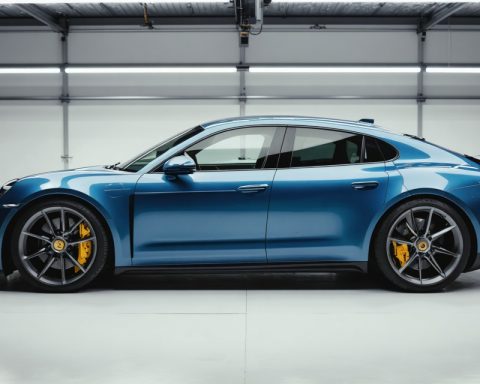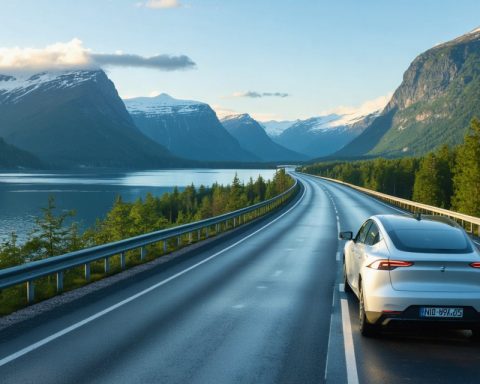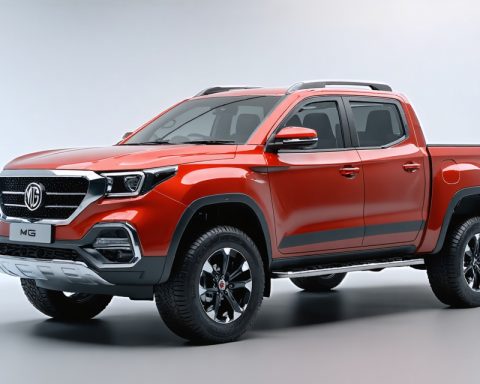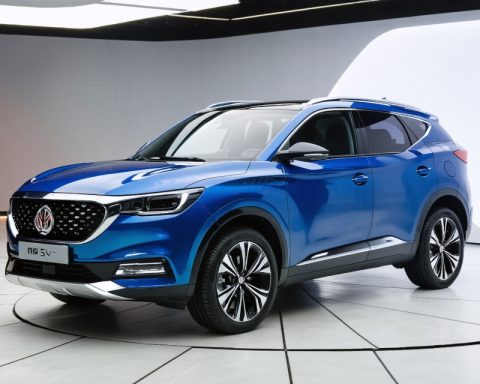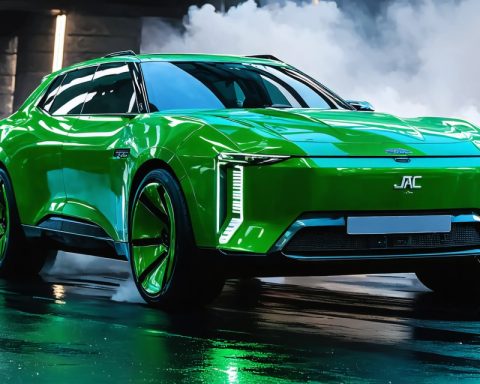- EVs are quietly revolutionizing urban life, transforming cities into cleaner, more efficient spaces.
- Urban planners are rapidly integrating EV-friendly infrastructure, with charging stations becoming increasingly common.
- The compact design of EVs allows for the conversion of city streets into pedestrian-friendly zones and green spaces.
- Challenges include the environmental impact of battery production and recycling, though advances in technology offer hope.
- EV adoption fosters community initiatives, enhancing social connectivity through ride-sharing and community swaps.
- Cities like Oslo and Amsterdam exemplify the potential for widespread EV integration, with significant percentages of electric cars on the roads.
- Overall, EVs represent the fusion of technology and environment, spearheading a transformational era for sustainable urban living.
Electric Vehicles (EVs) stealthily glide through city streets, marking a revolution that’s reshaping urban life, one lane at a time. With their silent motors and sleek designs, EVs offer a glimpse into a cleaner, more efficient transportation future, yet their most profound impact is on the bustling urban landscape itself.
Beneath the hum of traffic lights and the rustle of city parks, EVs are orchestrating a symphony of change. Picture city centers where the air is crisp, devoid of fumes, and the ambience is lively, not cacophonous with roars of combustion engines. This transformation heralds a burgeoning era of sustainable urban design—an era where cities are not just surviving but thriving.
Urban planners are pivoting, integrating EV-friendly infrastructure at breakneck speed. Charging stations, once rare novelties, now stand as beacons along bustling streets and serene residential blocks. These stations, with their neon-lit advances and rapid charging capabilities, help reduce range anxiety—a significant barrier for many prospective EV drivers.
However, the real charm of EVs lies in their potential to reclaim space. Parking lots morph into urban green havens and malls replace asphalt with florals, challenging the notion that cars occupy only roads. Analysts forecast that over 40% of city streets could potentially transform into pedestrian-friendly zones, thanks to the compact, garage-friendly nature of electric cars.
Yet, the silent revolution comes with its hurdles. Critics voice concerns over the environmental cost of battery production and recycling challenges. Despite these wrinkles, breakthroughs such as solid-state batteries and innovative recycling techniques offer optimistic glimmers of a sustainable path forward.
The transformation is not only ecological but deeply social. EV adoption often fosters community initiatives, from ride-sharing ventures to community swaps—fostering an interconnected urban fabric. Cities like Oslo and Amsterdam stand as visionary examples, where nearly half of the cars on the road are electric, illustrating a possible future for many cities worldwide.
Electric Vehicles embody the intersection of technology and environment, a fusion that beckons a brighter, cleaner urban vista. As urban centers teeter on the brink of change, the takeaway is unequivocal: EVs are not just shaping the future of transportation, but the very essence of urban life. In their quiet, steady presence, they invite us all to envision cities that breathe easier, think greener, and thrive collectively. Welcome to the age of urban metamorphosis, driven by the gentle hum of the electric motor.
Discover How Electric Vehicles Are Quietly Revolutionizing Urban Living
The Rising Wave of Electric Vehicle Adoption
Electric Vehicles (EVs) are transforming urban centers across the globe, thanks to their sleek designs and silent motors. As cities evolve to meet environmental challenges, EVs emerge as pivotal to reshaping transportation. Here, we delve deeper into this quiet revolution and its implications.
How EVs are Transforming Urban Living
1. Environmental and Health Benefits
EVs contribute significantly to reducing urban air pollution. According to the International Energy Agency (IEA), EVs emit approximately 50% less greenhouse gas than traditional combustion vehicles over their lifetime, when powered by average grid electricity. This leads to improved air quality and public health in cities.
2. Infrastructure Evolution
The growth in EVs necessitates robust supporting infrastructure. The installation of charging points is accelerating, with policies and incentives driving expansion. The U.S. and Europe have ambitious plans to install millions of charging stations by 2030. This expansion reduces “range anxiety” and fosters confidence in longer trips.
# How-To Steps for EV Infrastructure Development:
– Assessment and Planning: Identify high-traffic locations for installation.
– Implementation: Install fast-charging stations in strategic urban and suburban areas.
– Promotion and Incentives: Offer incentives for businesses to host charging stations.
3. Space Reclamation
EVs, often more compact, offer potential for urban space repurposing. Cities can transform parking lots into green spaces or community areas, enhancing livability. Amsterdam, for instance, is converting parking spaces to parks and pedestrian walkways, fostering sustainable urban environments.
Market Forecast and Industry Trends
The EV market is experiencing exponential growth. According to BloombergNEF, EVs are expected to comprise over 50% of all vehicle sales by 2040. Innovations like solid-state batteries promise longer life spans and enhanced sustainability, potentially overcoming current limitations.
Addressing Concerns and Challenges
1. Battery Production and Recycling
While EVs have environmental benefits, battery production is resource-intensive. However, advancements in battery technology and recycling methods, such as partnerships for closed-loop recycling systems, are mitigating these concerns. Companies are innovating with solid-state batteries, which use less raw material and have longer durability.
2. Social and Cultural Impact
EV adoption promotes community initiatives, such as car-sharing programs that reduce congestion and vehicle emissions. Cities like Oslo and Amsterdam are models for others, showcasing how coordinated policies can lead to significant EV adoption and improve urban life.
EV Pros and Cons Overview
Pros:
– Significant reduction in CO2 emissions
– Decreased noise pollution
– Lower operating costs
– Potential incentives and subsidies
Cons:
– High initial cost
– Limited range, although improving
– Charging infrastructure still developing in some areas
Insights & Predictions
As technology and infrastructure develop, EVs are set to revolutionize urban environments. Trends suggest increasing government and private sector collaboration will further accelerate EV adoption and infrastructure rollout. The future holds a promising vista of cleaner, quieter, and more sustainable cities.
Actionable Recommendations
– For Urban Planners: Prioritize investment in EV infrastructure and public transportation integration.
– For Consumers: Evaluate long-term savings in fuel and maintenance when considering an EV purchase.
– For Businesses: Consider transitioning company fleets to electric to capitalize on sustainability benefits and potential cost savings.
Quick Tips
– Stay informed about government rebates and tax incentives for purchasing EVs.
– Use apps to locate nearby charging stations, enhancing convenience and planning.
– Participate in local EV community initiatives to support a greener transition.
In conclusion, EVs are more than a transportation innovation—they are catalysts for comprehensive urban transformation. Embrace the change and drive forward into a sustainable future.
For more insights, visit the official websites of organizations like the International Energy Agency and Bloomberg.



